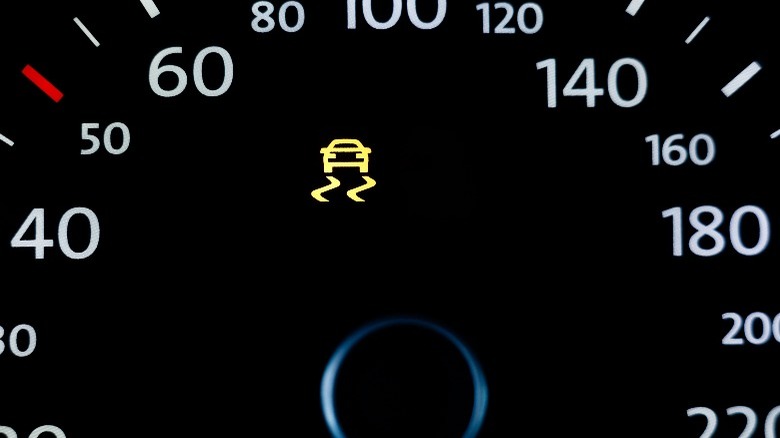What's The Difference Between Traction Control And Stability Control?
In the world of cars, progress never stops. Between the yearly releases of new models, the growing electric vehicle market, and ever-advancing technology and car safety systems, it can be hard to keep up with automotive innovations. Understandably, many people are confused by terms like stability control and traction control. While both of these technologies have been around for a while, most people tend to be less familiar with them than other, more well-known vehicle safety devices like airbags, seat belts, and anti-lock brake systems (ABS).
So, what exactly are traction control and stability control, and what are the differences between the two? While they sound similar and do, in fact, perform similar functions, they're not the same. Both traction control and stability control systems work with a car's ABS to help drivers maintain vehicle control in wet, slippery, or unstable driving conditions. However, the features and levels of control these systems provide differ significantly.
What is traction control?
Traction control systems are older than stability control. In fact, you can think of traction control as the older sibling or predecessor to modern stability control systems. Traction control systems (TCS) work hand-in-hand with a car's ABS, which measures wheel speed using sensors mounted on or near the wheel hub. These wheel speed sensors use magnets to monitor the motion and speed of your car's wheels. If the system detects abnormal spinning or a loss of traction — like when driving on wet or slippery surfaces like ice — the traction control light may appear on the dash, and the system will apply the brakes to one or more wheels automatically. Some traction control systems also reduce engine output when a loss of traction is detected. In these systems, if the driver begins to lose control, the system control module will selectively apply brake pressure and reduce engine output to help the driver regain command of the vehicle.
Traction control systems can usually be turned on or off using a button on the dash. The button may say "TCS," "TC," or "TCL," or have an image of a car with skid lines behind it. As mentioned, the traction control dashboard warning light symbol should appear when the system is in use, which is totally normal. However, if the light turns on and stays on, even when driving in normal, dry conditions, it's usually a sign of a malfunction in the system.
What is stability control?
Stability control is a more advanced version of traction control. It uses the same equipment — including the ABS and its associated wheel speed sensors — and features several additional sensors. Stability control systems — also known as electronic stability control systems (ESC), vehicle stability control (VSC), or electronic stability programs (ESP) — include a steering wheel position sensor, which helps the system monitor the steering wheel direction and the intended vs. actual travel direction. The system also features a yaw speed sensor, which measures how much the car skids or spins, and a three-axis accelerometer to track its angling and movement in all directions.
The system's control module interprets the combined data from these sensors and uses it to help maintain vehicle stability. If the system detects skidding or a loss of traction, it can selectively apply brake pressure and reduce engine output to put the vehicle back on track, similar to traction control. However, stability control doesn't just help in wet or slippery conditions like traction control, as it also maintains the car's stability during abrupt maneuvers and cornering by actively manipulating the vehicle's travel direction. In the U.S., all vehicles produced after 2012 must be equipped with electronic stability control as a standard feature.
Like with traction control, the stability control light will appear on the dashboard when the system is in use. However, if the light turns on and stays on, there's likely a problem with the system.


